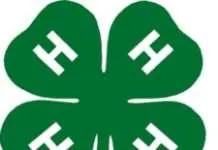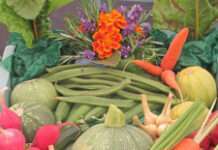K-State veterinarians discuss the importance of a calf nursing in the first 24 hours of its life
MANHATTAN, Kan. — The old phrase “Milk Does A Body Good” is an advertising slogan from the 1980s but still rings true today not only for people but for cattle as well. And just like in humans, the most important drink of milk in a calf’s life happens within the first 24 hours, according to Kansas State University veterinarians Bob Larson and Brad White.
“The first milk the calf gets is called colostrum and it provides critical immunity passed from the dam to her offspring,” White said. “Cattle aren’t born with immunity and the colostrum is vital to their health as they are exposed to pathogens in the first few months of life.”
In cattle, timing is everything, according to Larson who addressed this topic on a recent Beef Cattle Institute Cattle Chat podcast.
“Calves are only able to absorb the colostrum within the first 24 hours of life because of changes that happen in the gut wall, and ideally calves need to be nursing several times within the first 12 hours for the best success,” Larson said.
For that to happen Larson stressed the importance of a cow bonding with her calf early and that the calf is born in a clean, dry environment. He added that the cow’s health is important too.
“If she is in good body condition, she’ll concentrate the antibodies in the first milk,” Larson said. “It is also important that she is current on her vaccinations so that she can pass that protection to her calf.”
The veterinarians agreed that it is ideal when the cow and calf can manage this without assistance, but sometimes that isn’t the case.
“If there’s been a difficult birth, sometimes the cattle producer or veterinarian will have to offer assistance in delivering the colostrum to the calf,” Larson said.
That may mean putting the cow in the chute to milk her out and bottle feed the calf, or it may involve supplementing the calf with a commercial milk powder or colostrum provided by another cow from the same herd to avoid introducing diseases through the colostrum, Larson said.
“Mother’s milk is the best, and if that isn’t an option, then I would recommend feeding the calf a commercial colostrum replacement product,” Larson said.
To hear more on this topic, tune in to the BCI Cattle Chat podcast online.
FOR PRINT PUBLICATIONS: Links used in this story: https://ksubci.org/2021/02/05/breeding-and-heterogeneity-colostrum-international-trade-bull-social-introduction/
K State Research and Extension is a short name for the Kansas State University Agricultural Experiment Station and Cooperative Extension Service, a program designed to generate and distribute useful knowledge for the well being of Kansans. Supported by county, state, federal and private funds, the program has county extension offices, experiment fields, area extension offices and regional research centers statewide. Its headquarters is on the K State campus in Manhattan. For more information, visit www.ksre.ksu.edu. K-State Research and Extension is an equal opportunity provider and employer.
Story by:
Lisa Moser
785-532-2010
[email protected]
More information:
Bob Larson
785-532-4257
[email protected]
Brad White
785-564-7463
[email protected]




